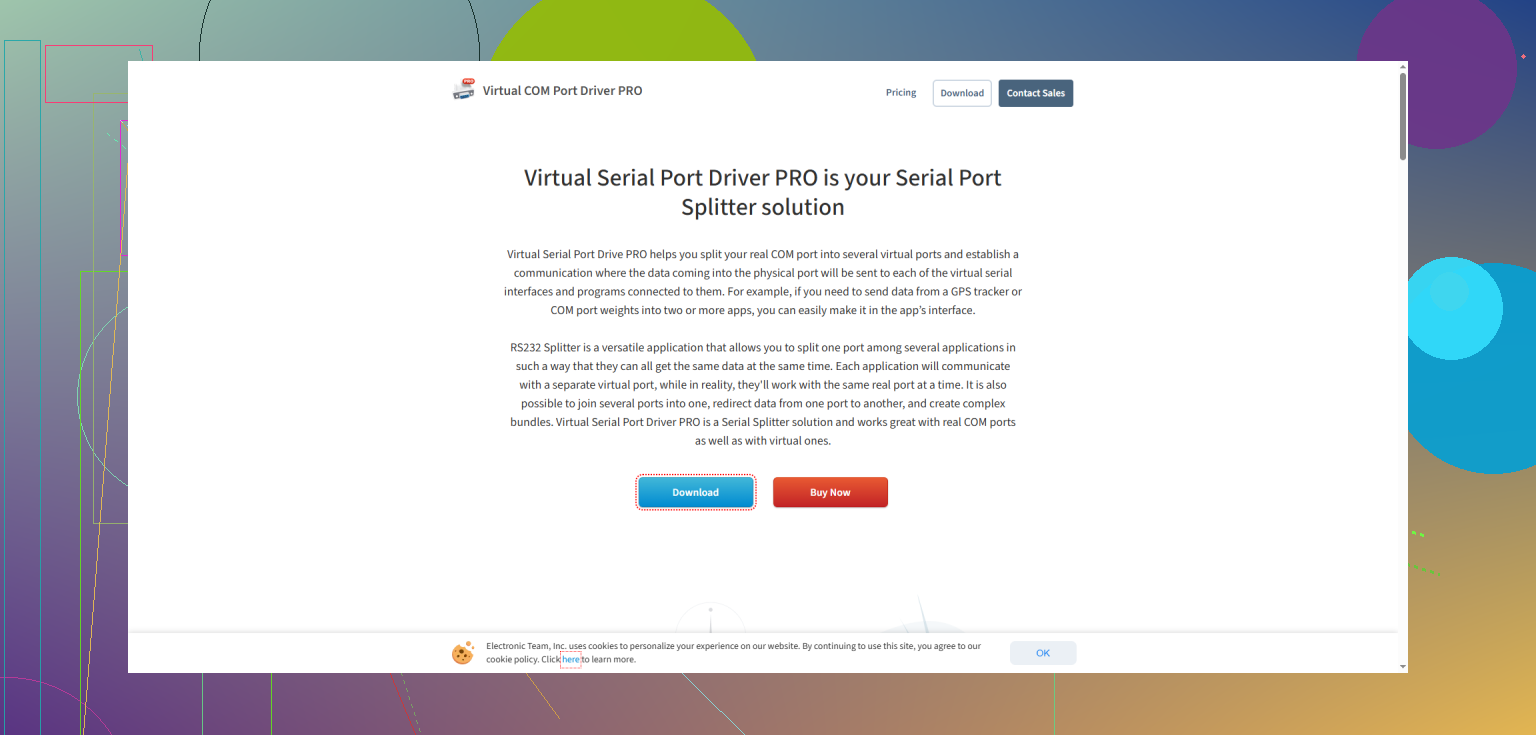I’m struggling to connect multiple devices to a single serial port on my PC, and it’s causing problems with my workflow. Can anyone recommend the best serial port splitter for stable connections and ease of use? Real user experience would be super helpful. Thanks in advance!
Honestly, trying to hook up multiple serial devices to a single COM port can feel like herding feral cats. Physical splitters rarely work out, since serial communication is rarely designed for true parallel device sharing—I’ve tried, you end up with data collisions, handshake weirdness, all sorts of drama. If you just want a physical Y-cable and hope for the best, you’re likely going to be disappointed, because classic serial ports just aren’t built for that kind of traffic-sharing natively—at least, not if both devices need to talk back and forth, unless you enjoy corrupted data streams and mysterious lockups.
What actually works? Software-based solutions. Check out Virtual Serial Port Driver: it basically acts as an advanced serial port splitter for Windows, letting you create multiple virtual COM ports mapped to a single physical port. Each app or device gets its own virtual port, and the software handles all the messy data routing—much more stable. It’s pretty much the only thing that lets multiple applications talk to the same serial device simultaneously without fighting like siblings over the last slice of pizza. I’ve used it to run two different data loggers off the same weather station and never crashed.
If you wanna dive deeper and see why this beats those hardware splitters (or even learn about other cool features, like joining COM ports), check out this guide on how to effectively share a serial port between multiple applications. Nice detailed walkthrough there too.
TL;DR: Physical serial splitters are prone to fail for serious multitasking. Go with Virtual Serial Port Driver. Your workflow—and your sanity—will thank you.
Physical splitters for serial ports? Might as well try duct-taping two cats together and hoping for a peaceful coexistence. I get where @mike34’s coming from—traditional serial, especially RS-232, just wasn’t built for multiple masters or daisy-chaining active conversational devices. Tried a Y-cable once with a Modbus controller and a barcode scanner… let’s just say the controller started speaking in tongues (random characters everywhere) and the scanner locked up.
Here’s another take, though: I have actually had limited success in certain read-only scenarios using a passive hardware splitter, if the devices were just snooping and not responding. But that’s niche and, honestly, not your case—most PC workflows need both-way traffic. If your devices need bidirectional communication, hardware splitters are basically trouble tickets waiting to happen.
So, yeah, gotta hand it to the software side. If you haven’t looked into a serial port splitter app like Virtual Serial Port Driver, it’s honestly what the serial gods intended for multitasking. You create multiple virtual ports, and the app manages data flow like a traffic cop on coffee. They also keep things stable if you’re juggling more than one data logger, sensor, or testing tool. Serious pro move for lab setups or dev testing.
Oh, and if you wanna get up and running with something that’s actually reliable, give this a whirl: check out this simple way to split your serial port traffic without drama. Gets right to the point—app, install, done.
Long story short? Hardware splitters = headache, unless you’re living in 1996. Virtual Serial Port Driver does all the heavy lifting and keeps your workflow from turning into a circus.
Let’s cut to the chase: talking about “serial port splitters” in 2024 is like arguing about VHS rewinder quality. Everyone loves to dunk on hardware splitters (with good reason—bidirectional serial isn’t a spectator sport), but there’s always that one use case where you kinda wish the physical route did work. In reality, it almost never does for genuine data sharing—unless you’re just eavesdropping, which is NOT your workflow.
Virtual Serial Port Driver is kind of the de facto gold standard now. The pros? It’s dead simple: virtualizes serial ports, gives each app or instrument its own lane, handles packet collisions like a boss, and barely sweats under concurrent loads. If you’re splitting a real-time feed between data loggers, dev tools, or anything that expects “exclusive access,” it’s the only way you’re not baking in bugs and weird freezes. Bonus: You won’t need to crawl behind the PC every time you rewire—just redo your virtual settings.
Downsides? Not free—license can sting a bit, especially if you’re temporarily testing. Also, not always intuitive for legacy-toting users (“Wait, why does my device now show up twice in Device Manager?”) and, if you need full industrial redundancy, pure software may introduce a single point of failure compared to dedicated hardware switching (which, granted, is itself rarely worth the pain).
Alternatives? Sure, our other poster hints at virtual solutions, but a few exist—like Eltima’s Serial Splitter or FabulaTech’s Serial Port Splitter. (No need to go googling, just recognize they target very similar scenarios. Feature sets vary slightly, pricing more so.) If you’re already invested in one ecosystem (e.g., using VMs or specialized test racks), check their built-in serial routing—sometimes “splitters” aren’t even necessary at the OS level.
Bottom line: Unless your devices are all just listening, don’t even mess with physical splitters. For real multitasking, Virtual Serial Port Driver gets you in and out without serial drama. Wouldn’t call it magic, but it’s close. Just budget for the license.
